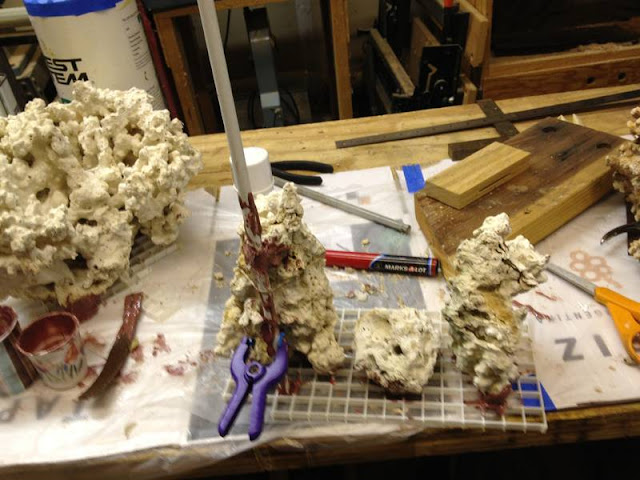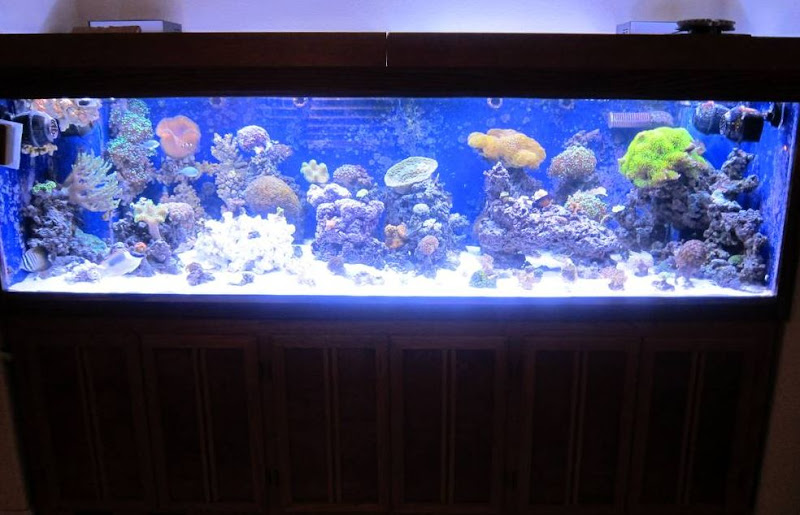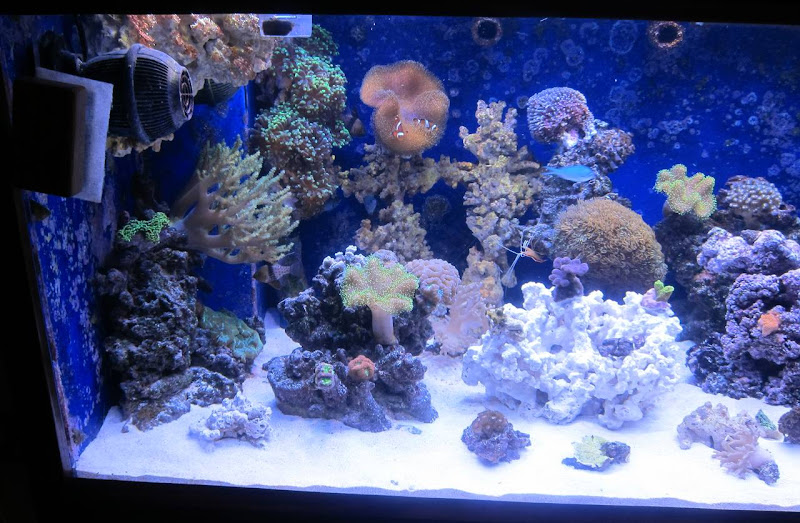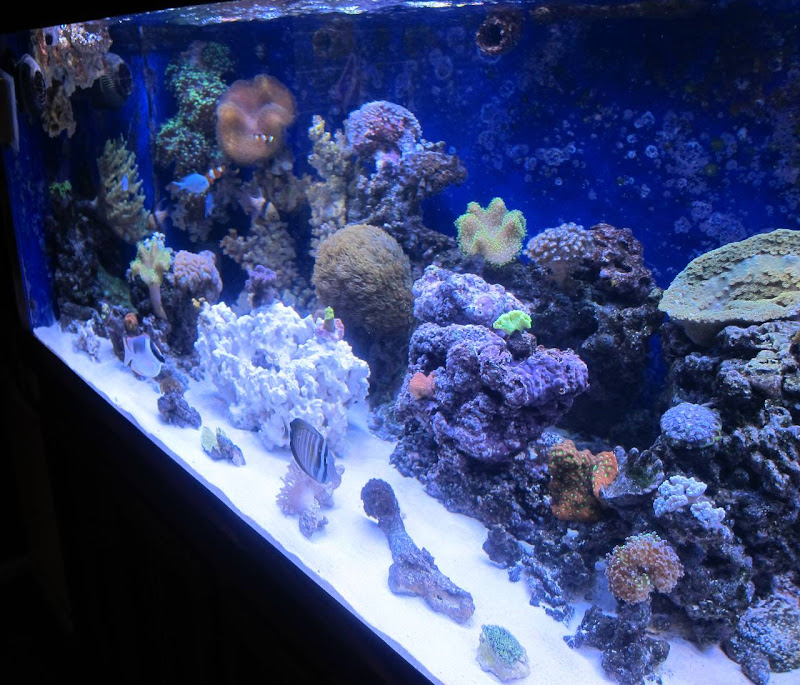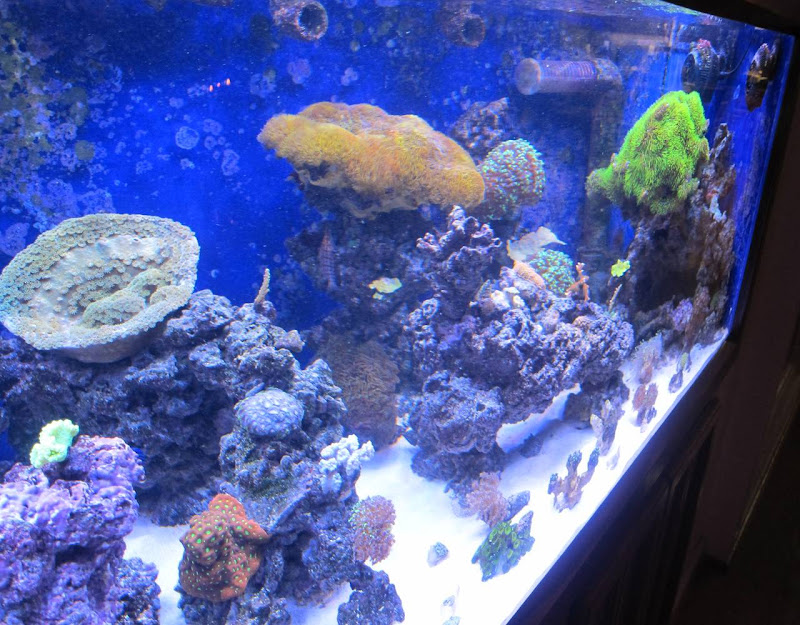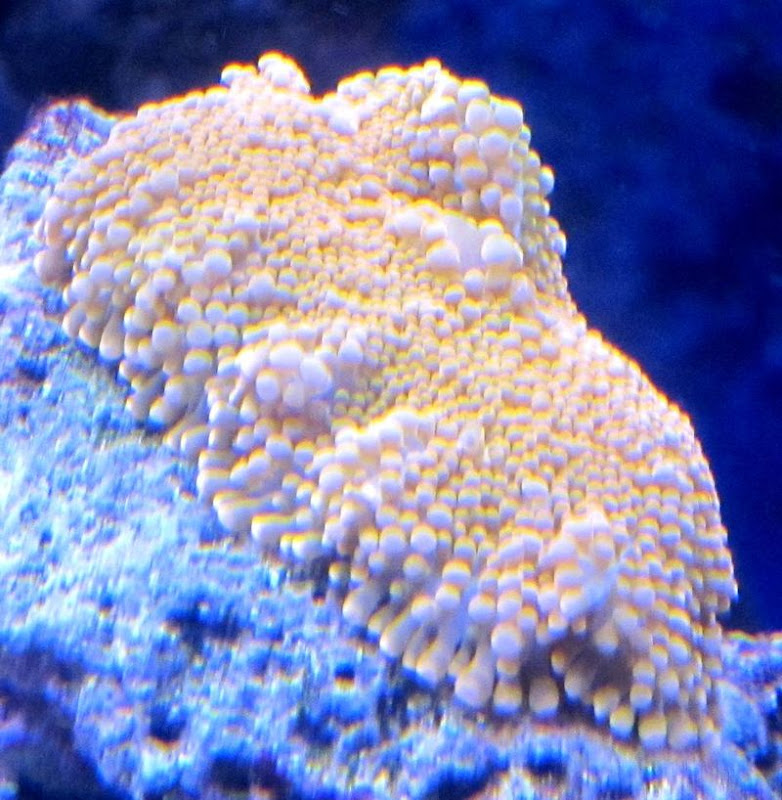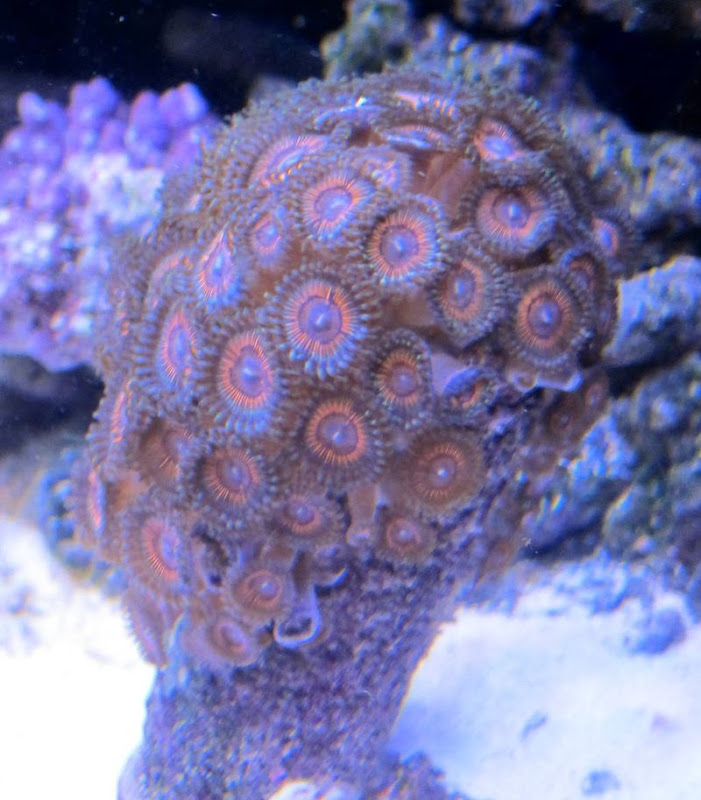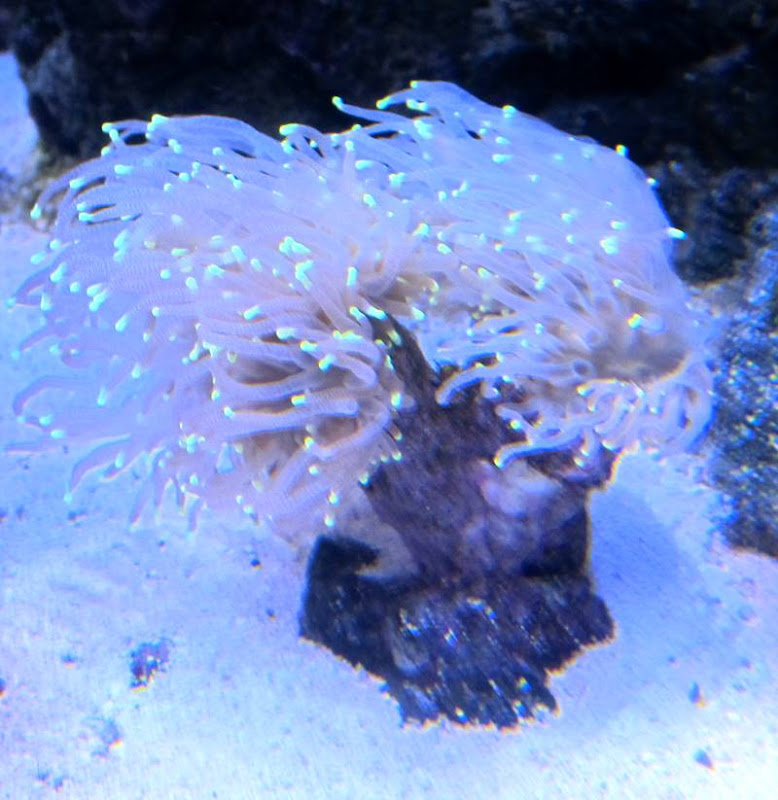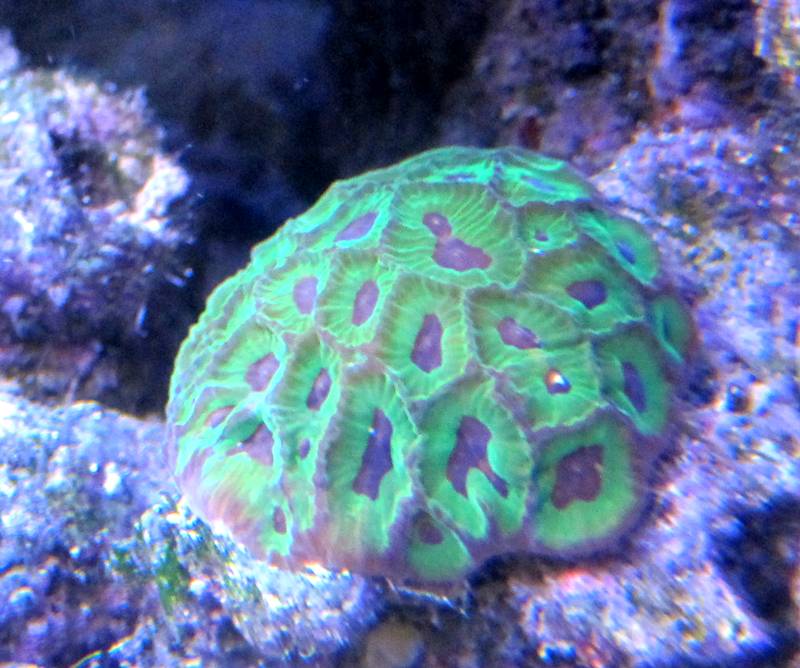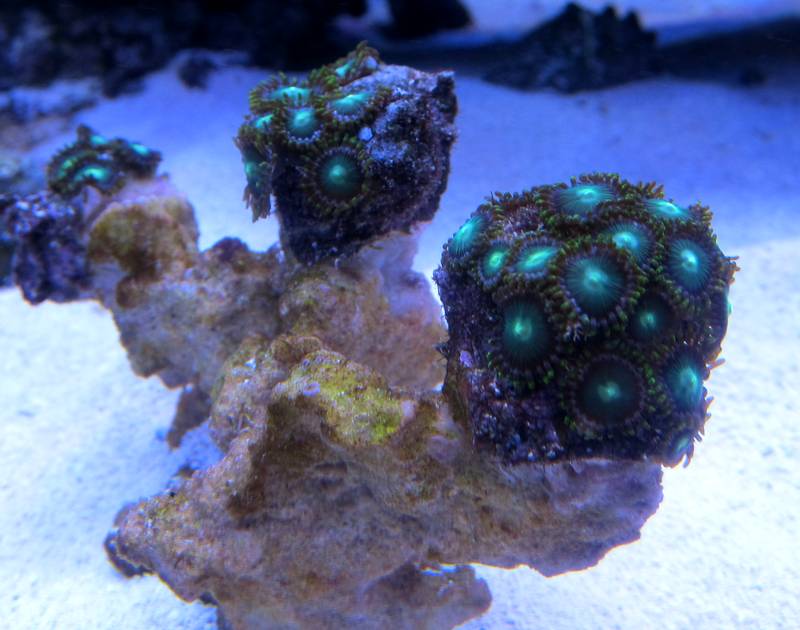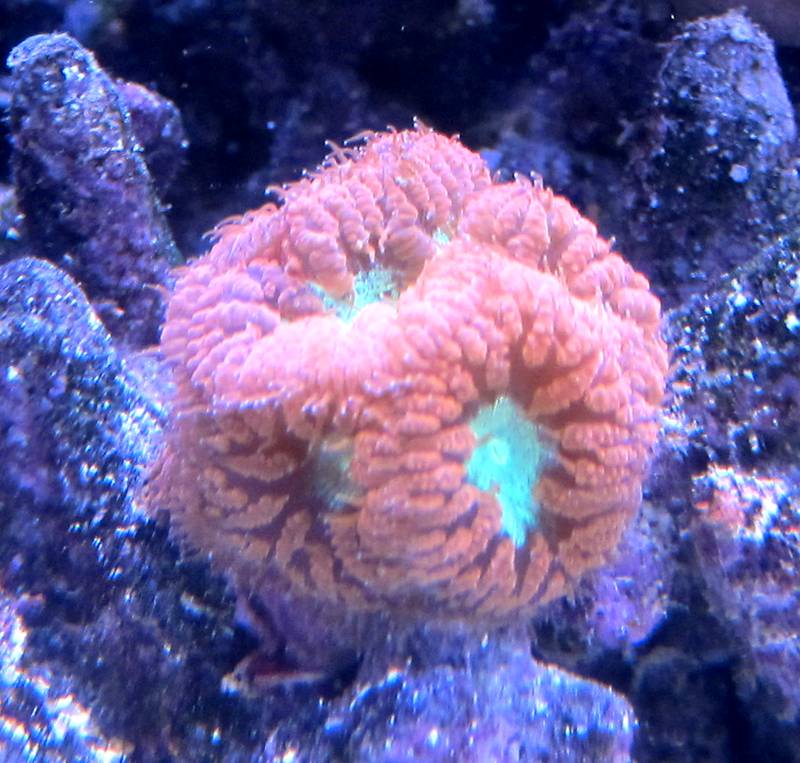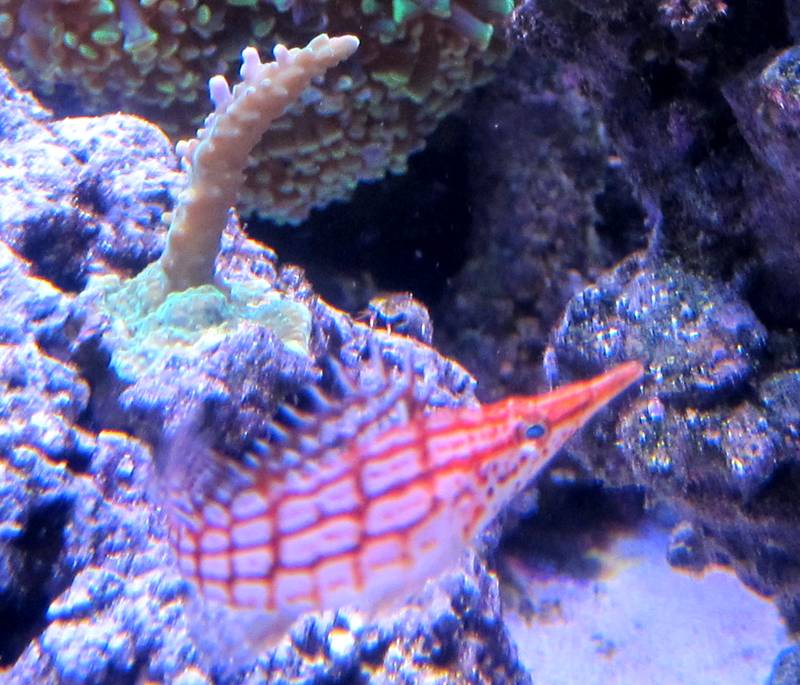Algae Scrubbers and phosphates (not nitrates):
There has been some discussion on whether or not an algae scrubber can reduce phosphates.
I have a new data-point on that, by accident.
A few weeks back, my pump to the scrubber jammed from calcium deposits, and I did not
notice until the algae was thoroughly dried out and dead.
It took about 3 weeks to return to full health.
Before this problem, my phosphates were great. Marginally measurable on the fancy ultra-low range PPB tester.
Not surprisingly, with the scrubber off line, both nitrates and phosphates rose a bit.
Nitrates plummeted quickly back to 0 once scrubber re-established itself of course.
But phosphates stuck around, and I got a mild cyano outbreak.
I put in some GFO. Problem solved. Experiments are fun, but not at the expense of the coral.
SO:
With the scrubber on (and no GFO), long term, no phosphates.
With scrubber off, phosphates went up.
With scrubber back on, no immediate drop in phosphates.
Thus my conclusion from my tank history and that very un-scientific accidental study:
Algae scrubbers do reduce phosphates, but really only at a slow rate.

